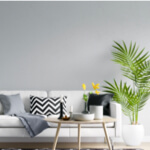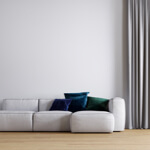Gary Hume
Untitled (Four Doors), 1991
Pencil and coloured ink on paper
55.9 x 75.9 cms
22 1/16 x 29 14/16 ins
22 1/16 x 29 14/16 ins
101
Signed lower right HUME and dated 1991. Hume's doors are at once abstract and hyper realistic. Their subjects are the double doors to be found in the corridors of hospitals...
Signed lower right HUME and dated 1991.
Hume's doors are at once abstract and hyper realistic. Their subjects are the double doors to be found in the corridors of hospitals and institutions, with their push plates and circular windows. These doors were the sole subject of Hume's work from the late 1980s until the end of 1992. Superficially abstract, these pictures are in fact portraits of doors: renderings that are, according to the artist an empty sign, simultaneously spacious and oppressive.
In the catalogue to Sensation: Young British Artists from the Saatchi Collection, (Royal Academy of Arts, London, 1997), Hume's pictures of doors are characterised as schematic explorations of transitional space: connections between spaces, but not places in themselves putting the viewer both inside and outside the institutional doors.
Adrian Searle, writing of Hume's doors in an essay for Frieze in 1993, observed:
it seems entirely appropriate to our time that the painting-as-window should have become painting-as-door, and that the door should be closed. It is an image of closure and impenetrability which still manages to allude to the idea of something beyond - withheld, unseen, absent. There's a dumb poetry in the image of a shut door. Yet Gary Hume's doors are much more than dumb; as much as anything else they are a doorway to theory-heaven ... anointed not so much with incense but with more than a whiff of Modern Art liturgical - things phenomenological, epistemological, paradigmatically and semiological.
This rare door drawing is one of a small group that was included in Hume's exhibition of Dolphin Paintings at Karsten Schubert in 1991. This exhibition presented a new series of door paintings. After an earlier series of single Magnolia doors, Hume now combined doors of varying colours and sizes, placing them side by side, like clothes on a line. In the present work the doors are rendered all the more abstract through their repetition.
Frame included.
Hume's doors are at once abstract and hyper realistic. Their subjects are the double doors to be found in the corridors of hospitals and institutions, with their push plates and circular windows. These doors were the sole subject of Hume's work from the late 1980s until the end of 1992. Superficially abstract, these pictures are in fact portraits of doors: renderings that are, according to the artist an empty sign, simultaneously spacious and oppressive.
In the catalogue to Sensation: Young British Artists from the Saatchi Collection, (Royal Academy of Arts, London, 1997), Hume's pictures of doors are characterised as schematic explorations of transitional space: connections between spaces, but not places in themselves putting the viewer both inside and outside the institutional doors.
Adrian Searle, writing of Hume's doors in an essay for Frieze in 1993, observed:
it seems entirely appropriate to our time that the painting-as-window should have become painting-as-door, and that the door should be closed. It is an image of closure and impenetrability which still manages to allude to the idea of something beyond - withheld, unseen, absent. There's a dumb poetry in the image of a shut door. Yet Gary Hume's doors are much more than dumb; as much as anything else they are a doorway to theory-heaven ... anointed not so much with incense but with more than a whiff of Modern Art liturgical - things phenomenological, epistemological, paradigmatically and semiological.
This rare door drawing is one of a small group that was included in Hume's exhibition of Dolphin Paintings at Karsten Schubert in 1991. This exhibition presented a new series of door paintings. After an earlier series of single Magnolia doors, Hume now combined doors of varying colours and sizes, placing them side by side, like clothes on a line. In the present work the doors are rendered all the more abstract through their repetition.
Frame included.
Join our mailing list
* denotes required fields
We will process the personal data you have supplied to communicate with you in accordance with our Privacy Policy. You can unsubscribe or change your preferences at any time by clicking the link in our emails.






